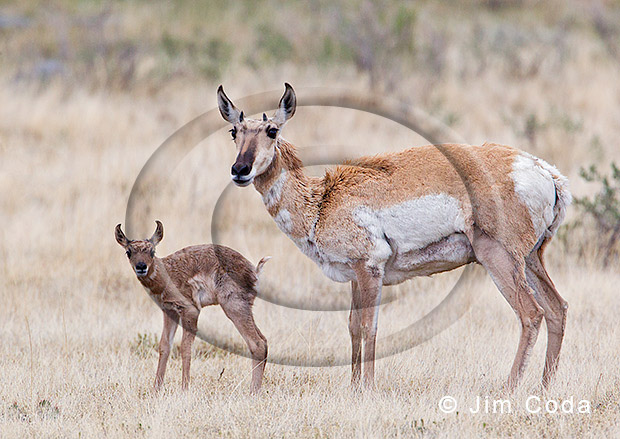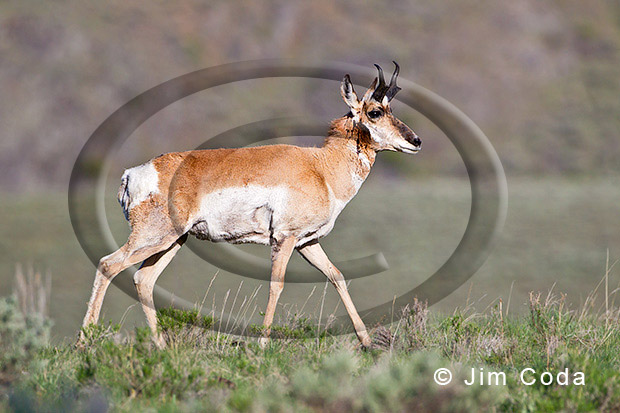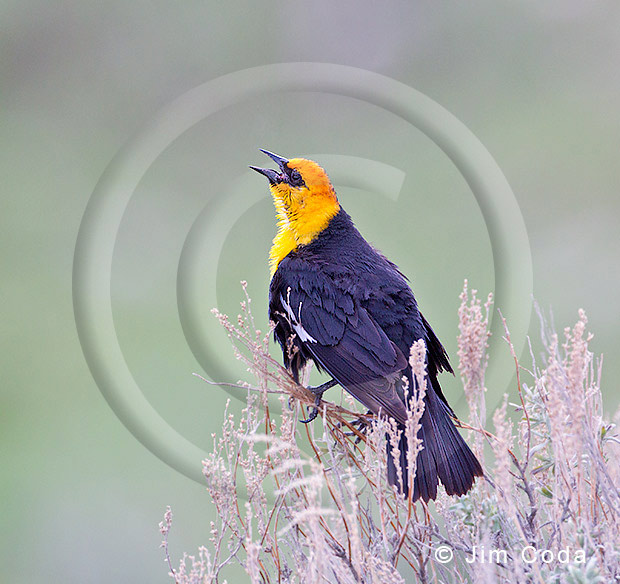Pronghorn Mom and Fawns

A pronghorn doe stands with her fawns just outside the northern boundary of Yellowstone National Park.
This site is dedicated to wildlife and landscape photography.

A pronghorn doe stands with her fawns just outside the northern boundary of Yellowstone National Park.

It’s that time. If you like to photograph wildlife you should be in Yellowstone or on your way. Bison calves are running all over the place. Elk, pronghorn and bighorn sheep are giving birth or will be soon. The bears are also out and about, some with cubs. It is the time to see and photograph baby animals.
This pronghorn fawn was born last May. The doe kept it and its sibling between the Roosevelt Arch and the north entrance station for the first week after birth. That’s when I left the park. The area is bounded by three roads and a high steel fence. It was crowded and noisy and wouldn’t seem to be a place for a wild animal to want to have babies. It’s also about the last place around Yellowstone that I would want to be stationed for a week hoping to photograph some predators. I don’t know if it was just happenstance or that mother pronghorn knew this was a good place to have her babies while they got stronger and were able to run fast enough to escape from a predator.

This pronghorn mom and her two babies made a lot of visitors happy by staying between the Roosevelt Arch and the entrance station in late May. I spent a lot of time observing her and her two fawns.
During the time I observed her, she kept the fawns well-separated except on one occasion. I wonder if this is to minimize a predator getting them both. She would visit each one every couple of hours and let them feed for a few minutes and then they would lie down again in a new spot until she returned. They usually stayed perfectly still, but I saw one of them move once. Movement like that can get a young ungulate killed I would think. Each morning I would check to see if they were both there. They were still there when I left the Park on June 1.
I wondered if the mother made a good choice in keeping them where she did. I think so. It’s a rectangular area bordered by roads on all four sides and by buildings on two sides. There is a lot of human activity around there all day. Maybe not as safe at night, but “safe” is a relative term in the pronghorn world.

Yellowstone has 200 to 300 pronghorns. They only exist in the Park in its northern range. They spend winters in the Gardiner Basin and some, but not all, migrate from there to spend summers at higher elevations in the Park as far as the Lamar Valley.
One way to see them is to drive the Old Yellowstone Trail in the Gardiner Basin. Start at the Park’s Roosevelt Arch and drive north around the west side of the Gardiner school and then continue on the gravel road until you get to the boat launch just before the bridge that crosses the Yellowstone River. At that point you can either turn around and head back the way you came or you can cross the bridge, get on Highway 89, and drive at highway speed back to Gardiner. Pronghorn are here year round. Note to photographers: For most of this route the land looks to be in bad shape vegetation-wise, but gets better at the north end. By the way, when you get back to the Roosevelt Arch look for pronghorn in that half mile or so between the Arch and the entrance booth.
The other option is to head for the Lamar Valley and look for them any place between Mammoth and the Lamar Valley that has open terrain. I usually take a detour and drive the road to the Slough Creek Campground because I often see a few pronghorn there. By the time you get to the confluence where Soda Butte Creek joins the Lamar River you will have covered about all the pronghorn habitat that can be seen from a vehicle. The area from Mammoth to the Lamar Valley is summer range only.

Here’s a pronghorn buck that I also saw and photographed last May. It was in the Slough Creek area. It’s also missing a chunk of hair at the top of the shoulders. It also seems to be missing some flesh, but it’s hard to be certain because of the angle of view. The doe in the previous posts provided a good view of her wound because she was walking downhill. The only point of posting this image is that it is the second pronghorn I saw in May that seems to have a wound in about the same place. I find that interesting. Was it a golden eagle? I don’t know, but it’s possible.

Only one person took a guess on what had happened to this pronghorn. She guessed a bear. A good guess. I thought I’d get a few more people to venture a guess. Maybe some were afraid to guess wrong. That presumes I would be providing the answer to what happened though. The fact of the matter is that I don’t know for sure what happened to her. I do have my own guess though. I think a golden eagle attacked this pronghorn. Why?
First of all, golden eagles have been observed by credible sources (published reports by biologists) attacking and killing pronghorn adults and fawns. The attach begins by the eagle chasing one or more pronghorns and landing on the back of one and riding it while digging its talons into the pronghorn’s back. Most of the damage is caused by the talons, although their beaks can also inflict injury. If you’d like to read some of these reports you can click here, here and here.
Second, someone took several photos of a golden eagle eating an adult pronghorn while riding on its back. Based on the photos, I assume (and hope) it died shortly thereafter. The pictures have appeared in various places on the internet. One place to see the photos is here. I should warn you that the photos are somewhat gruesome. I was hesitant to link to the photos, but decided on balance to do so with the warning. The wound to the pronghorn in the photos is in the same place as in my photo and that’s why I guess the wound is from a golden eagle. Anything is possible though. It could be from another animal or a vehicle or a barbed wire fence (or whatever).
She was feeding when I saw her so the attack was over by then. I hope she survived.

When I drove out to the Lamar Valley each day this past May I would usually check out the road to the Slough Creek campground. It’s a good drive for finding bison, pronghorns and coyotes in the spring. It’s also a prime area for wolves and grizzlies. I would often see this male yellow-headed blackbird as I drove past a small marshy area along the road.
Yellow-heads are a little smaller than their red-winged cousins and not as common. I don’t think I’ve ever seen one before in Yellowstone. I know I’ve never photographed one there before.
